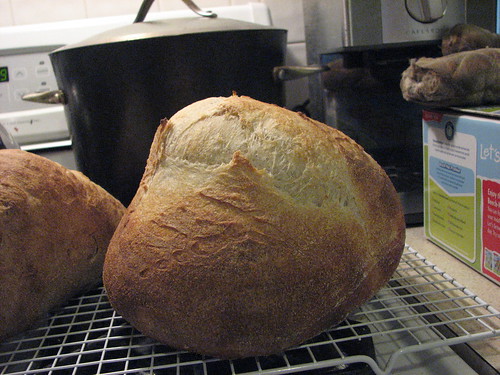I think I have finally achieved
I followed the 2nd recipe on davidg618's post "Adjusting Sourdough Starter" which allows a pure sourdough baked bread to be finished within 6 hours. This is the first time that I could bake a sourdough bread with some height. All my past ones were flat because they spreaded sideways once they were released from the form they were final-proofing in. Also, the colour of the crumb is no longer greyish.
Here is how it looks like
- Log in or register to post comments
- 6 comments
- View post
- bblearner's Blog


